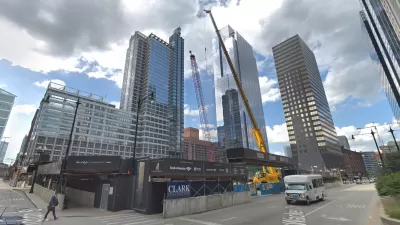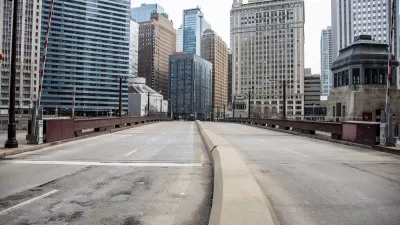Whet Moser looks at the revival of the intercity bus industry, despite its past inadequacies and stigmas. He discusses a new report that details the elements contributing to today's bus boom.
In this article, Moser first reminisces about his own past experiences, often negative, with intercity bus travel, before pointing to some surprising new findings regarding the turnaround in the industry. He presents the findings from a new report ‘The Motor Coach Metamorphosis" [PDF] published by DePaul’s Chaddick Institute for Metropolitan Development, that charts the decline and growth of intercity bus services. According to the report, "[i]ntercity bus service grew by 7.5% between the end of 2011 and 2012 -- the highest rate of growth in four years," outpacing growth in rail, airline and automobile intercity travel modes.
Moser cites two important phenomena contributing to this trend: 1) the opening of new bus services starting in 2006, including MegaBus and BoltBus, offering cheap fares and technological perks such as WiFi, which added much-needed competition to the otherwise stagnant bus industry; and 2) the revival of central-business districts throughout America's cities, which appeal to young travelers looking to avoid the hassle of travel to and from airports. The report also talks about how the incorporation of new technologies, streamlined location of new bus stops, and federal crackdowns on unsafe "Chinatown" buses are all contributing to growth in this industry.
Moser notes that nearly 50% of intercity bus users are within the ages of 18 and 25, that 5 out of six are traveling for fun or personal reasons, and that the majority are women. Finally, he speculates that another possible contributing factor to this trend is the abundance of time that many younger travelers may have prior to entering the workforce, before the "money-for-vacation-days trade" makes long bus journeys less attractive.
FULL STORY: Megabus, the Recovery of American Downtowns, and the Resurgence of the Bus Industry

Planetizen Federal Action Tracker
A weekly monitor of how Trump’s orders and actions are impacting planners and planning in America.

Map: Where Senate Republicans Want to Sell Your Public Lands
For public land advocates, the Senate Republicans’ proposal to sell millions of acres of public land in the West is “the biggest fight of their careers.”

Restaurant Patios Were a Pandemic Win — Why Were They so Hard to Keep?
Social distancing requirements and changes in travel patterns prompted cities to pilot new uses for street and sidewalk space. Then it got complicated.

Platform Pilsner: Vancouver Transit Agency Releases... a Beer?
TransLink will receive a portion of every sale of the four-pack.

Toronto Weighs Cheaper Transit, Parking Hikes for Major Events
Special event rates would take effect during large festivals, sports games and concerts to ‘discourage driving, manage congestion and free up space for transit.”

Berlin to Consider Car-Free Zone Larger Than Manhattan
The area bound by the 22-mile Ringbahn would still allow 12 uses of a private automobile per year per person, and several other exemptions.
Urban Design for Planners 1: Software Tools
This six-course series explores essential urban design concepts using open source software and equips planners with the tools they need to participate fully in the urban design process.
Planning for Universal Design
Learn the tools for implementing Universal Design in planning regulations.
Heyer Gruel & Associates PA
JM Goldson LLC
Custer County Colorado
City of Camden Redevelopment Agency
City of Astoria
Transportation Research & Education Center (TREC) at Portland State University
Camden Redevelopment Agency
City of Claremont
Municipality of Princeton (NJ)




























